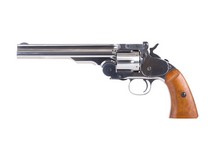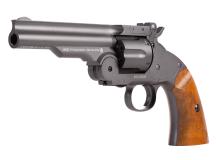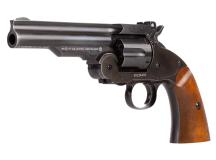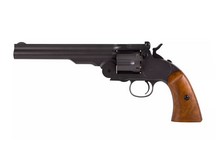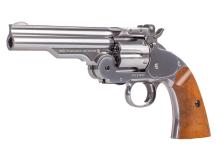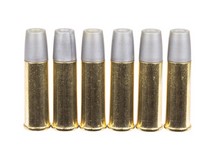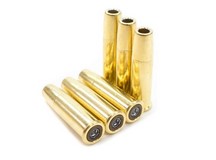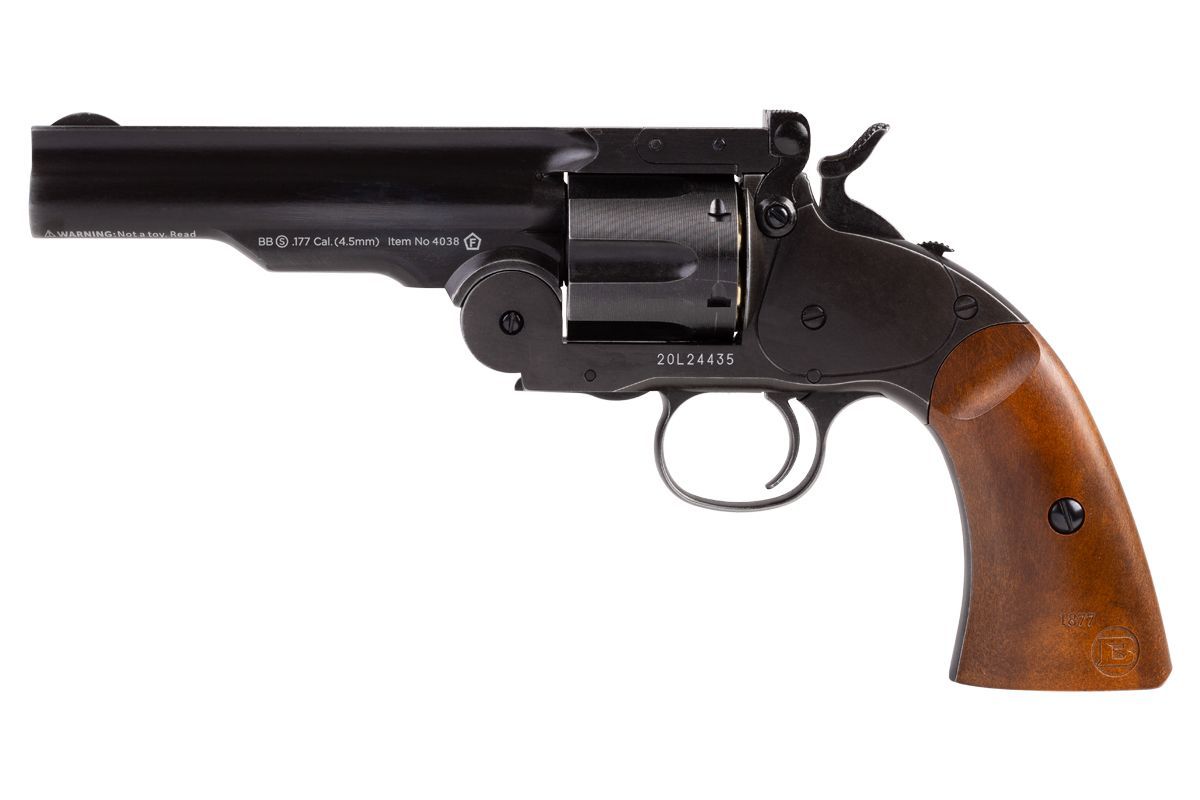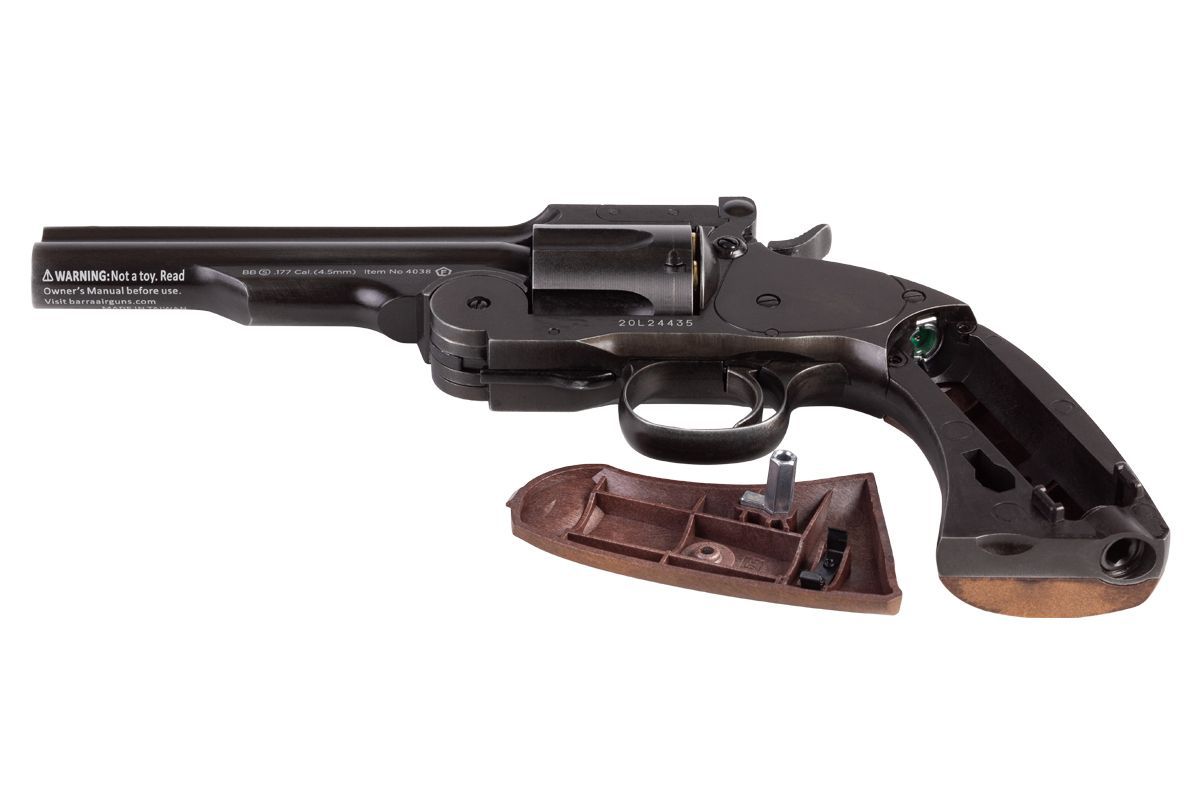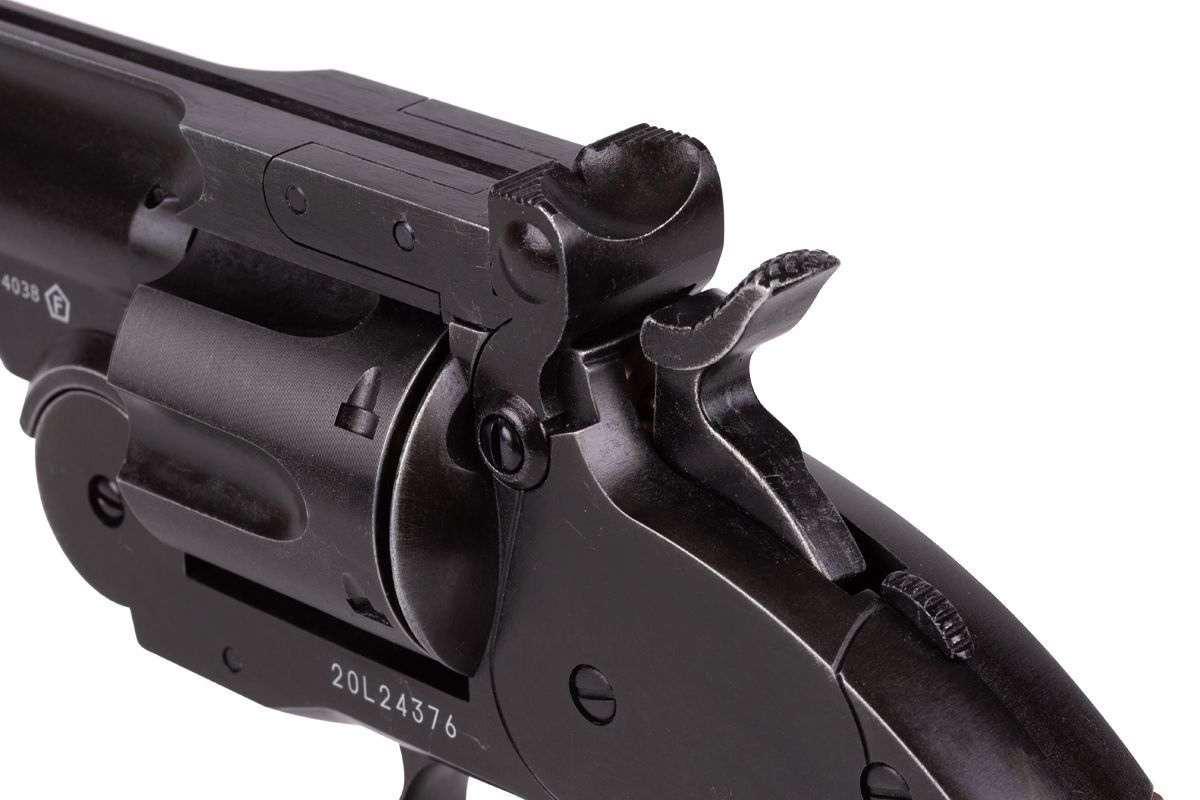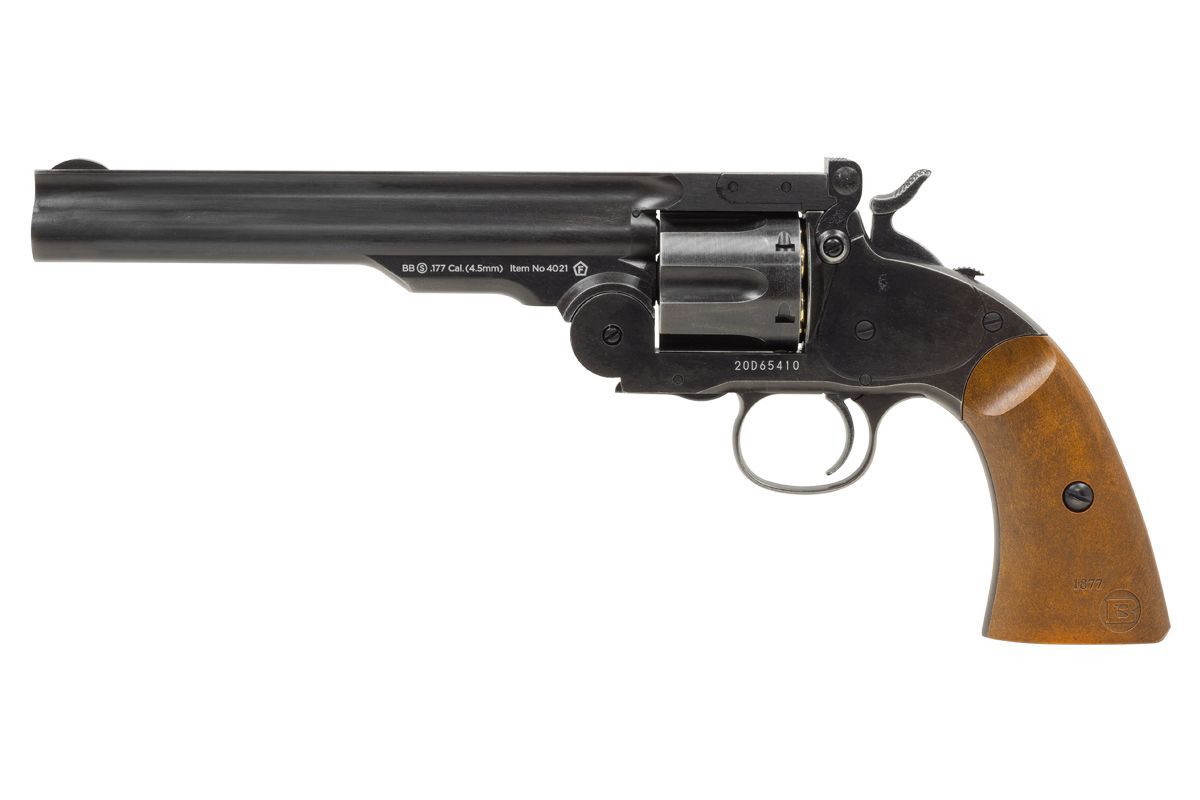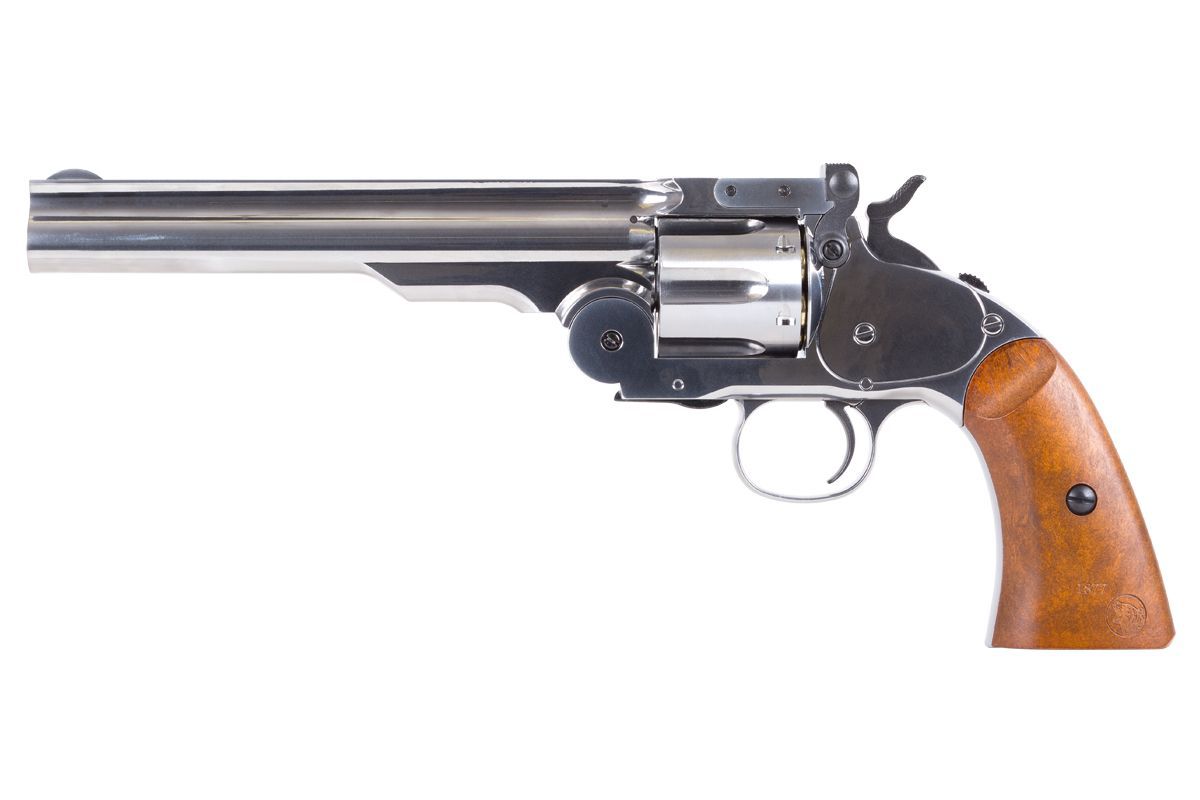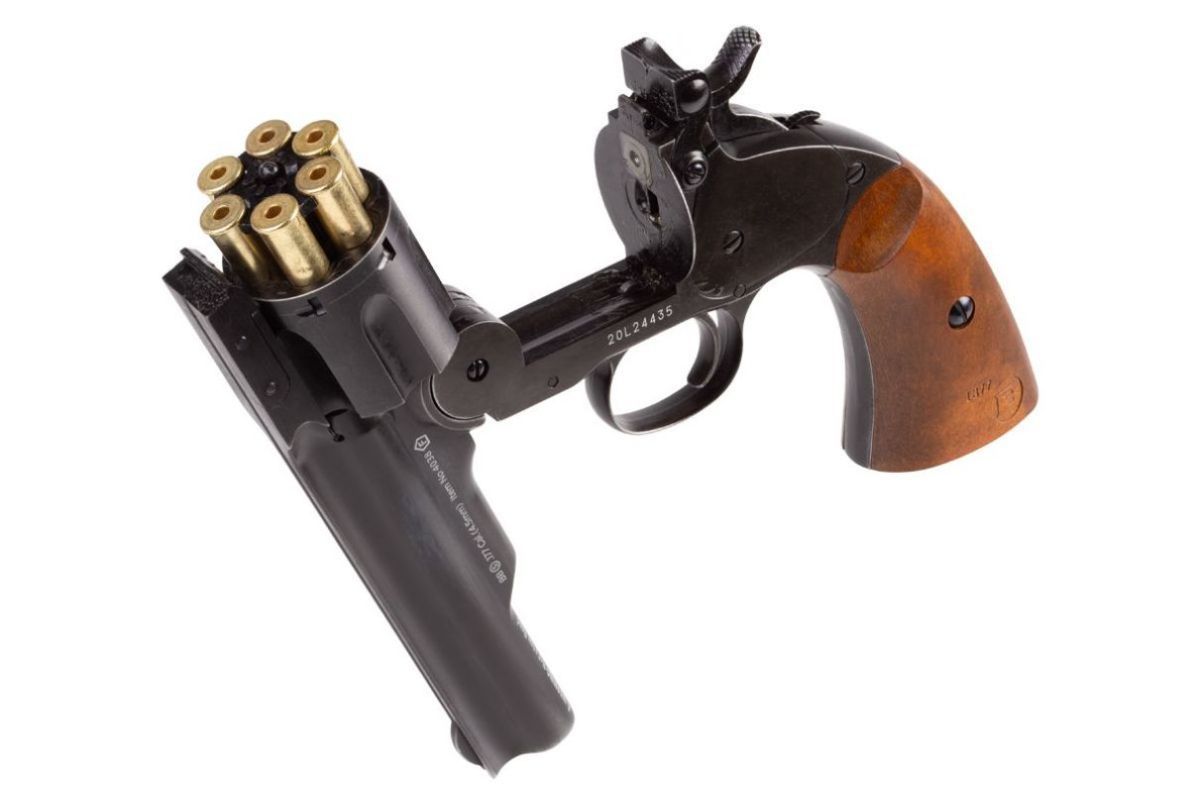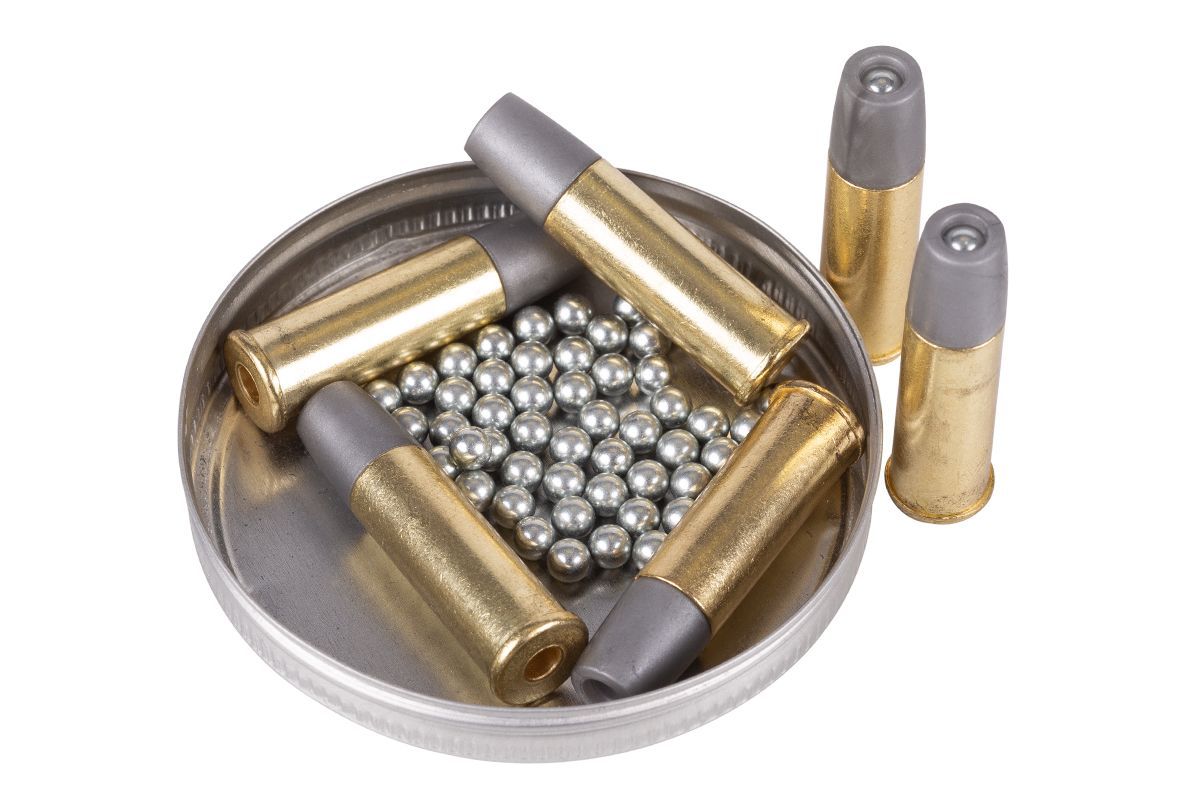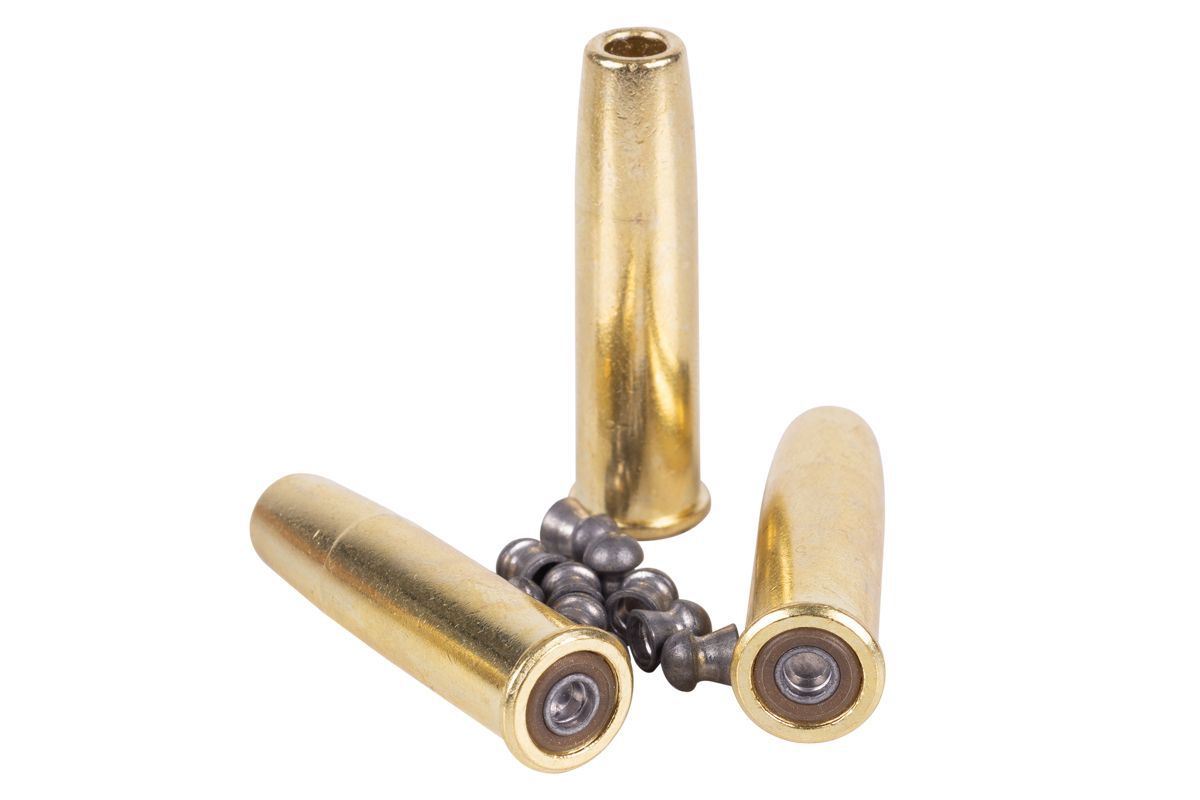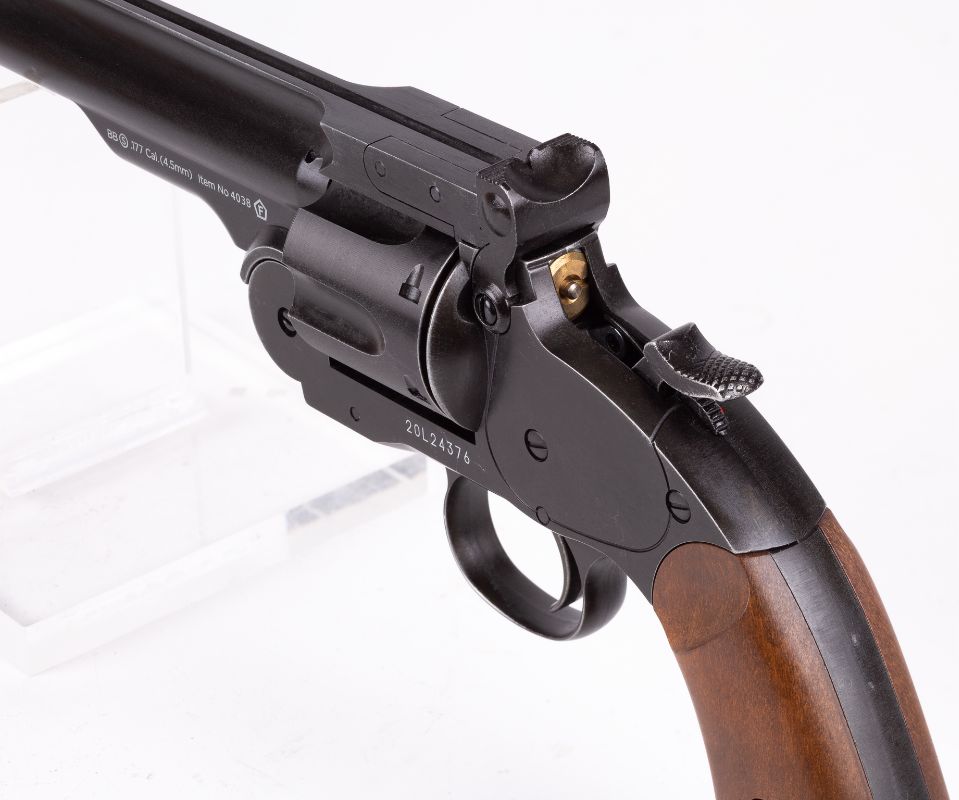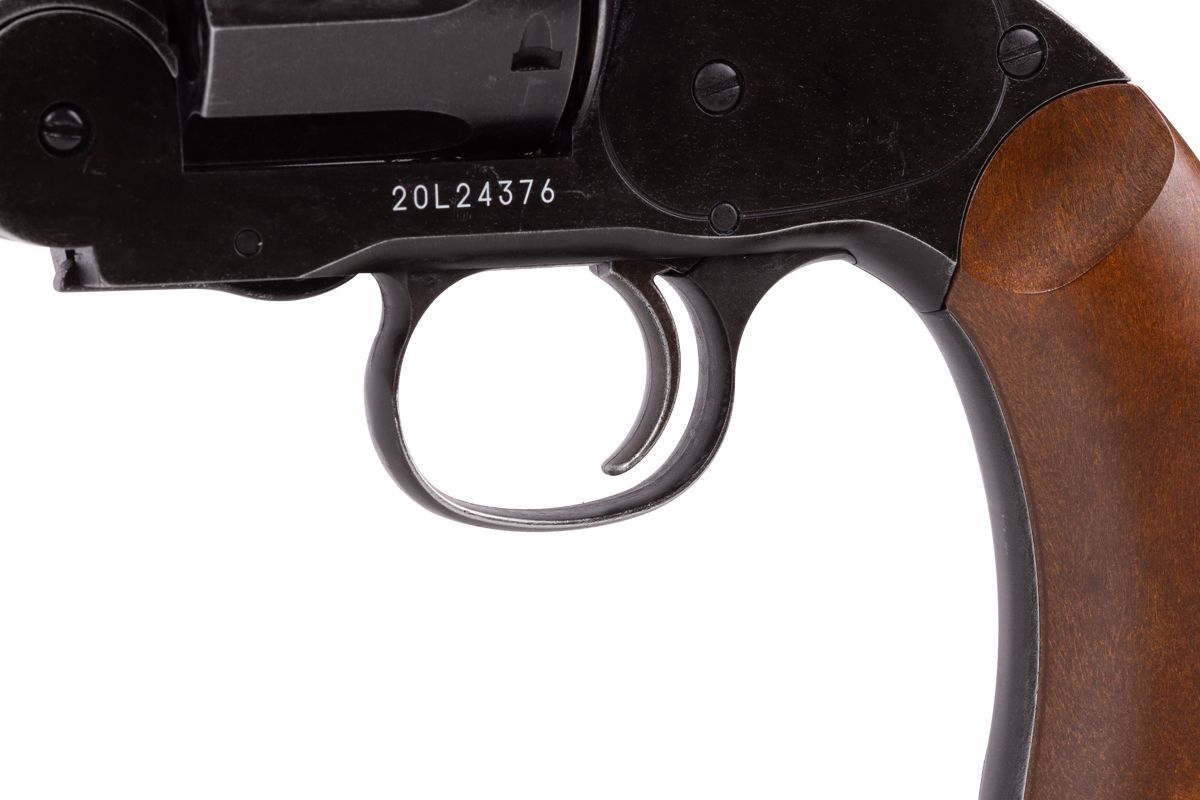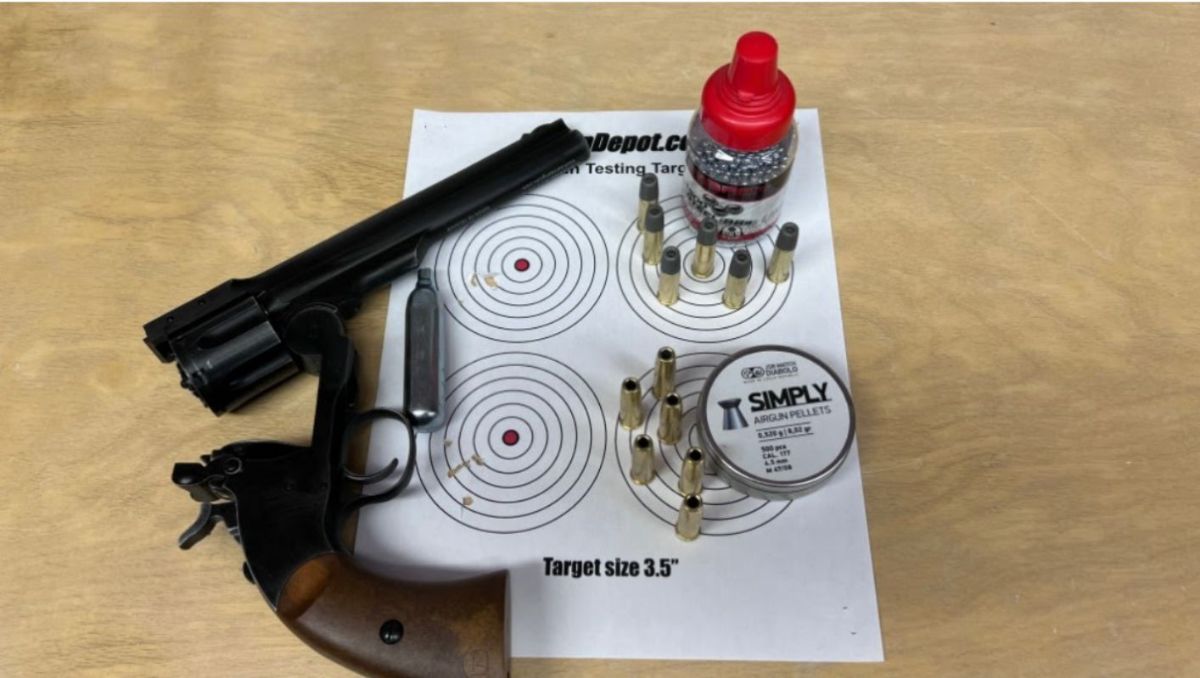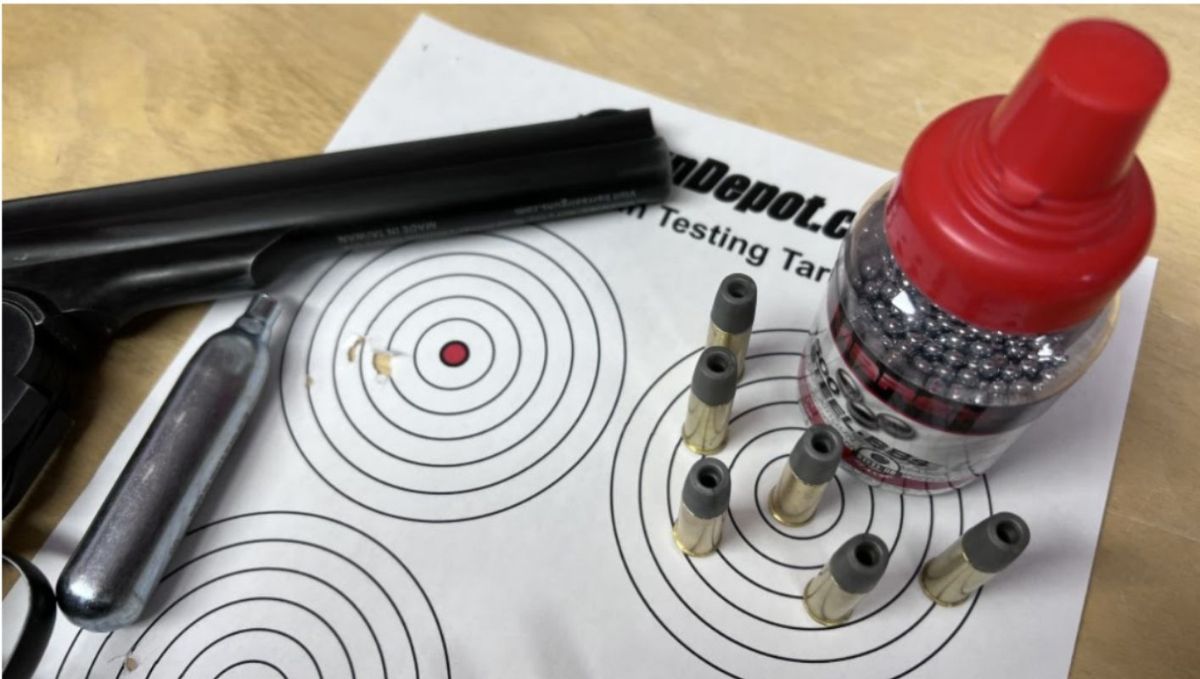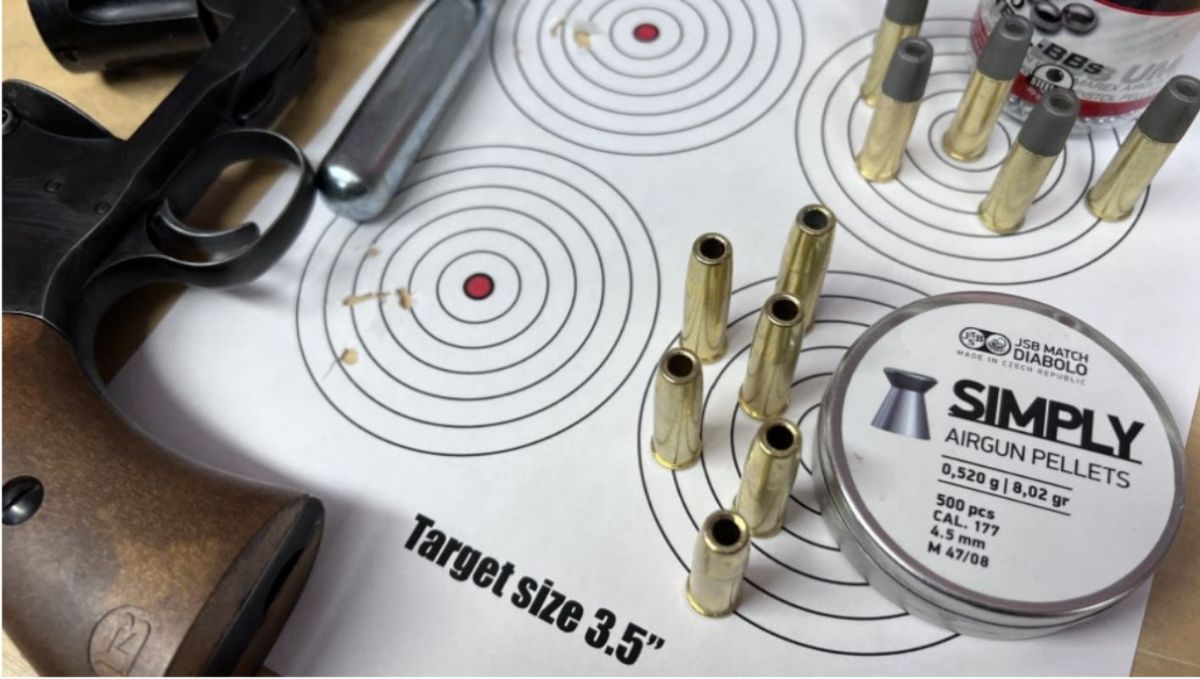Definitive Guide to Schofield No. 3
In the late 1800s, most revolvers were still utilizing the old cap and ball design. While certainly effective, it was slow, dirty, and susceptible to wet weather. These are not features that you want to have in a personal defense or military weapon. Smith & Wesson began developing their No. 3 break open revolver that would initially try to utilize .45 Long Colt cartridges, eliminating all the inherent shortcomings of cap and ball revolvers essentially.
Sometime near 1870, Major General W. Schofield incorporated many of his designs into the No. 3, creating the Schofield No. 3 Revolver. Rather than stick with the .45 Long Colt, S&W decided to use a slightly shorter cartridge, the .45 S&W. The US Army adopted it in 1875(ish, reports vary), making it the first standard-issue cartridge firing revolver in US service. It was in service for some time before being phased out sometime in 1898 due to the cartridge confusion caused as some branches used the .45 Long Colt, and others were outfitted with the .45 S&W.
The unique break open design and powerful .45 S&W cartridge made the Schofield No. 3 a potent weapon on the battlefield. We are very pleased to offer several replicas of the Schofield No. 3 as a CO2 bb revolver. In this definitive guide, we'll focus on the Schofield No. 3 5" aged model but will also touch on all the various models we offer.
The aged version of the Schofield revolver bb gun is a great replica of what you'd expect a pistol to look like after several years of service. The frame is all metal with distinct and deliberate wearing on the muzzle and other edges that would rub coming in and out of a holster. There is a lot of attention to detail going on here.
The grips are faux wood that feels smooth to the touch. Removing the grip on the left side reveals the CO2 bay. The CO2 charging wrench, something often lost during the first 15 minutes of ownership, is conveniently included as part of the grip. While seemingly sturdy enough during our testing, the "wrench grip" does feel a little thin, which gave us a little pause when using it to turn and pierce the CO2. We never had an issue, but we wanted to mention it nonetheless.
On top of the action, you'll find the fixed rear sight, which doubles as the revolver's break open release. Pulling back on the rear sight frees the cylinder and barrel to rotate forward, exposing the shells that are pressed upward as you open the revolver. This replicates the original firearm perfectly. At the front of the receiver, you'll find the fixed front sight.
We currently have several variations of the Schofield No. 3 revolver. Including a long 7" barrel option, standard blued option, and both the short (5") and long (7") in a nickel finish. They all have the same excellent build quality and operational features.
Setup & Operation
If you've spent any time with CO2 revolvers, then you know what comes next. We need to install the CO2, load up our shells, and get down to some shooting. The replica Schofield No. 3 BB Revolver ships with six standard BB cartridges. However, you can also purchase pellet cartridges if you prefer to shoot pellets over steel BBs. Replacement cartridges are readily available on our site. We will talk about the performance differences shortly.
Once you've loaded your CO2 and loaded your BB of choice into the individual cartridges, we recommend Umarex Zinc Coated Precision BBs or Daisy Avanti BBs for optimal performance, you can drop them into the cylinder, close the action, and you are ready to fire.
All the Schofield models are only single action, meaning that you'll need to cock the hammer between each shot. We found the reach from the grip to the hammer ergonomically challenging. Maybe we have a smaller grip, but the reach forced us to rotate the entire revolver to reach the hammer and cock it for the next shot. Your mileage may vary. The trigger pull is very light and predictable, breaking at 1lb 4oz, typical of a single-action revolver.
Performance & Accuracy
The No. 3 5" model we are testing generated 108 DB at the bench. While it has the typical "pop" you get from a CO2 revolver, we don't expect the noise to carry that far. If noise is a concern, you may want to run your own tests.
Shot count on a single CO2 will vary based on temperature, rate of fire, etc. You should expect to get 60 or more shots from a single CO2, with the potential for more based on your shooting habits. The 5" model tops out at 400 FPS with standard weight pellets. The longer models top out at around 445 FPS with the same shot count. The increased velocity is thanks to the longer barrel.
On our site, we classify the best use case of the Schofield No. 3 as "plinking." Please don't read anything into that classification. That is where we put all CO2 BB pistols. Because the Schofield has fixed sights, you'll need to adjust your aim to the point of impact, bringing the shots to the center as needed. If you keep your shots to a reasonable distance, say 15 to 20 feet, then you'll be very pleased with the results you can get.
Switching over to the pellet shells, you'll see your top velocity drop to the low to mid 300s using 7.0-grain wadcutter pellets. Accuracy can be better with pellets, but that will vary from model to model and depend heavily on what pellet you choose to use. We recommend lighter wadcutter pellets for best results.
You may be asking why you would want to shoot pellets? It's a reasonable question. There can be a noticeable difference in accuracy with pellets, so that is the first major reason. The second is that soft lead pellets will deform when they impact hard objects. If you wanted to practice shooting steel cowboy action targets like the Air Venturi Diamonds, then you'd want to shoot lead simply for safety's sake. As a note, there are frangible BBs (Air Venturi Dust Devils) and lead BBs (H&N Smart Shot BBs) if you prefer not to run pellets.
Here are some six-shot groups showing what you can expect with the Schofield No. 3 revolver with a 3.5" barrel at 20 feet.
Shot groups aiming dead center at 20 feet from the bench:
6 shots with UX Precision Zinc Coated BBs:
6 shots with JSB Simply Pellets:
Summing Up
Let's go ahead and wrap things up here. The Schofield No. 3 revolver is an iconic part of our history. While it did not remain in service all that long, it helped transition the US military away from cap and ball revolvers to the more reliable cartridge revolvers.
Our test model is very well built, fun to shoot, and has an old-world look and feel that is a conversation starter. We really like the aged model as it looks like it came right out of an old army holster with many stories to tell. But, the other models are also fine replicas. The Nickel-plated versions are certainly beautiful to look at too.
The option to run BBs or pellets is certainly a bonus, making the Schofield No. 3 bb gun replica line effective for backyard plinking as well as personal training if that's your focus.
If you have more questions about the Schofield No. 3 line of replica CO2 BB Revolvers, please don't hesitate to give us a call here at Airgun Depot. We will be more than happy to help.
